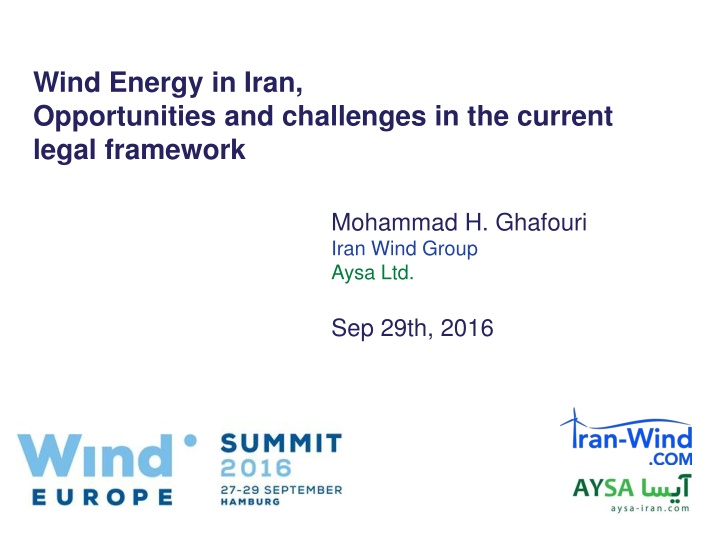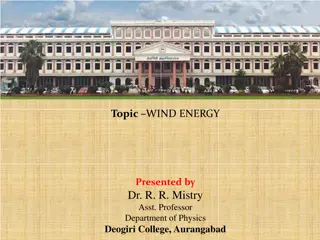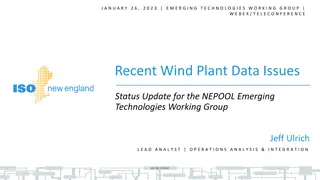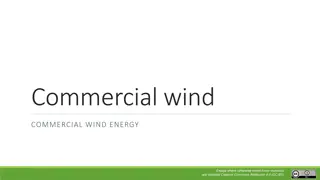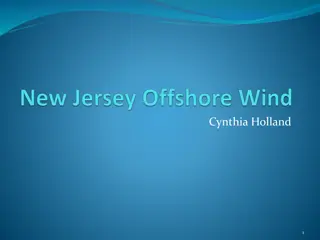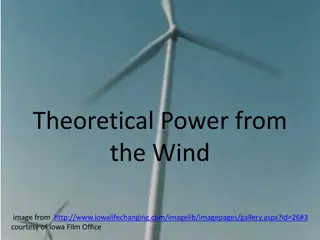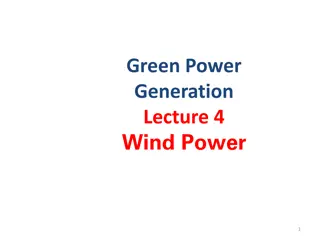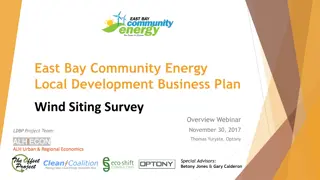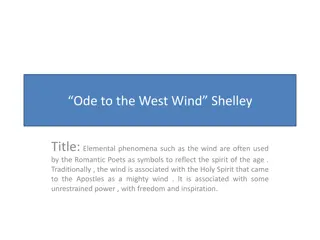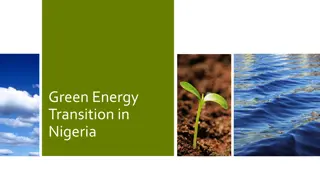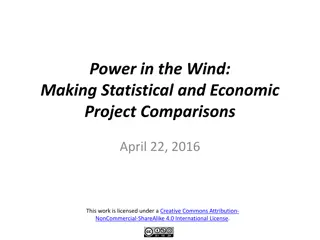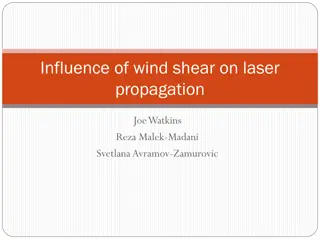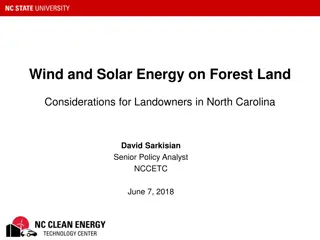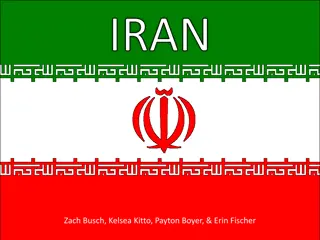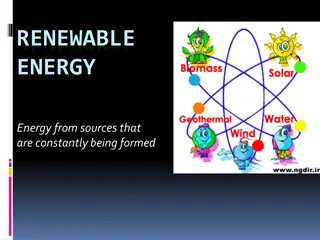Wind Energy in Iran: Opportunities and Challenges in Legal Framework
This document discusses the current legal framework surrounding wind energy in Iran, exploring opportunities and challenges for development. It covers relevant institutions, policies, support mechanisms, feed-in tariffs, and more. The discussion delves into the specifics of wind farm sizes, feed-in tariff rates, power purchase agreements, and incentives for using locally manufactured equipment.
Download Presentation

Please find below an Image/Link to download the presentation.
The content on the website is provided AS IS for your information and personal use only. It may not be sold, licensed, or shared on other websites without obtaining consent from the author.If you encounter any issues during the download, it is possible that the publisher has removed the file from their server.
You are allowed to download the files provided on this website for personal or commercial use, subject to the condition that they are used lawfully. All files are the property of their respective owners.
The content on the website is provided AS IS for your information and personal use only. It may not be sold, licensed, or shared on other websites without obtaining consent from the author.
E N D
Presentation Transcript
Wind Energy in Iran, Opportunities and challenges in the current legal framework Mohammad H. Ghafouri Iran Wind Group Aysa Ltd. Sep 29th, 2016
Content 3 1. Relevant institutions for Renewable Energy development in Iran 2. Relevant policies and support mechanisms 3. New Feed in Tariffs 4. New Challenges and Opportunities
Relevant institutions for wind energy development in Iran 4 Ministry of Energy Tavanir Holding Company SATBA Deputies SUNA Distribution Companies Office of Private Sector Contribution Technical & Administrative Deputy Solar Energy Dept.
Current policies and support mechanisms for PV 5 NO. TITLE YEAR POLICY TARGET Determining the Feed in Tariffs every year 2016 Law on Energy Consumption Reform (Article 61) 1 Financial Resource for RE Electricity payment and rural electrification Financial Resource for RE Electricity payment equal to saved fuel Electricity Sector Supporting Law (Article 5) 2015 2 Supporting the Domestic Production Law (Article 12) 3 2015 4 National Development Fund 2010 Private Infrastructure Projects The 6thNational Development Plan (not passed yet) RE Target, new Financial Resources, 5 2017
Feed in Tariffs for Wind 6 Guaranteed Feed in Tariff Size of Wind Farm (Rials/ kWh) *( -ct/ kWh) Wind Farm > 50 MW 3400 10 Wind Farm <= 50 MW 4200 12 Wind Farm <= 1 MW 5700 16 * Exchange rate: 1Euro = 35.100 Rials http://www.cbi.ir/ExRates/rates_en.aspx
Feed in Tariffs for Wind Farms (valid until 21 March 2017) 7
Feed in Tariffs for Wind 8 1. 20 years PPA First come first served basis adjusted every year (according to inflation and exchange rate change) 2. Feed in Tariffs in Rials Feed in Tariffs 3. Tariffs multiplied by a decreasing factor in the second 10 years 4. Extra 148 Rials/ KWh if the wind farm connected to the distribution grid 5. Up to 30% increase in FIT if using Iranian manufactured equipment (local content) 6. Two Power plants are considered as one power plant with the corresponding FiT If they are next to each other or connected to the same substation and have any same shareholder 7. 15 months deadline to commission the power plant after signing the PPA 8. The policy of MoE is to reduce the FIT in proportion with the increase of the installed capacity in the country.
New Challenges and Opportunities 9 Challenges Opportunities/ Solutions 1. SUNA is not high positioned in the hierarchy of the Ministry SATBA RE Association (in the Chamber of Commerce) to stablize the Tariffs, and other laws. 2. Drastic changes in feed in tariffs 3. Enough budget to buy RE electricity? The 6thfive-year Development Plan with new Financial resources It would be in parallel with FiT system Only for very big projects 4. Beginning tendering system? 5. >10 GW issued licenses without much progress ??
New Challenges and Opportunities 10 More than 10.000 MW issued licenses The lack of progress in project development Everybody could apply for permits and obtain it easily and free. The reason? SUNA Solution? New Limitations: - Expiring the license (Construction Permits) after 6 months, if not much progressed in the development. - Each company/ person can obtain only two licenses (Construction Permits) - (Not-announced) CAP of 20MW for PV, and 50MW for wind for the first time applications. - It is kind of filtering system. What could be the better solution?
11 Thank you for your Attention! Mohammad Hassan Ghafouri Founder of Iran-Wind Group Managing Director of AYSA Ltd. Ghafouri@iran-wind.com Ghafouri.mh@gmail.com Everything is possible if you realy want!
